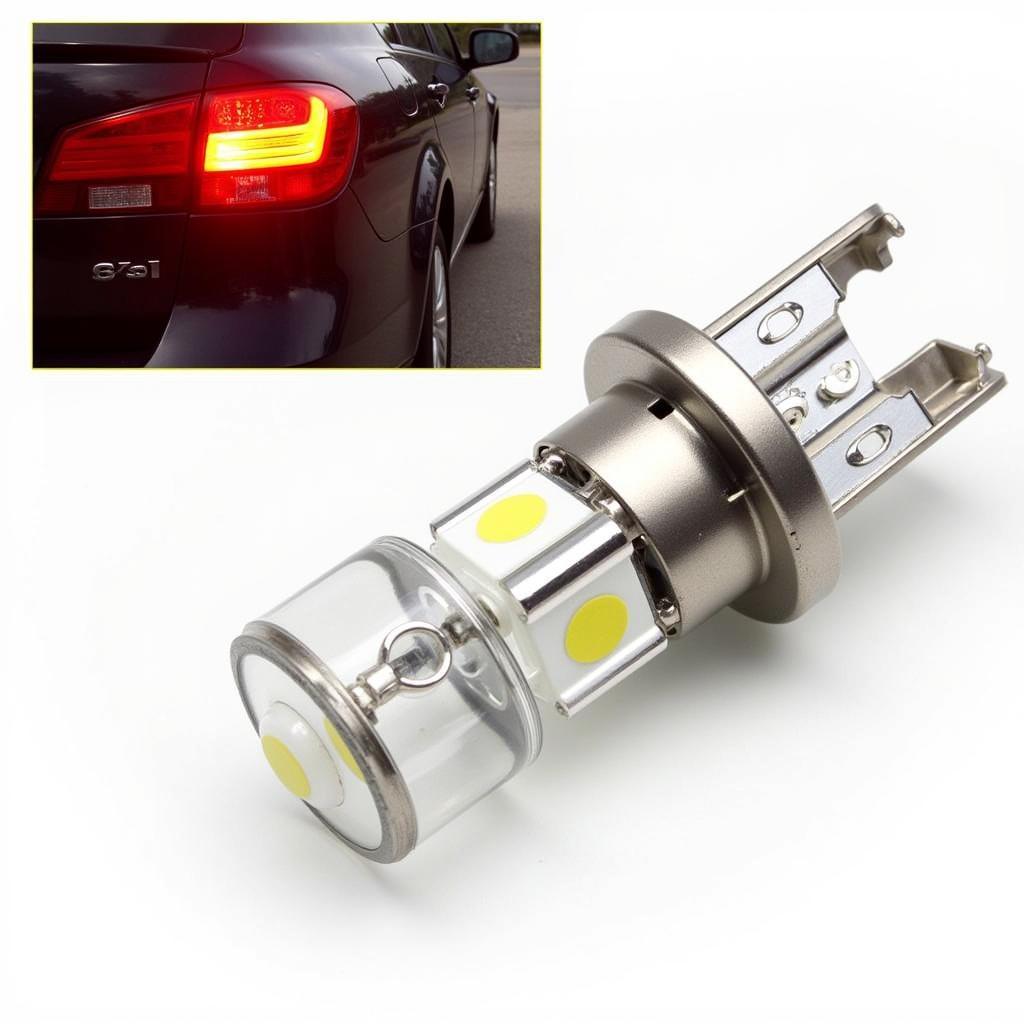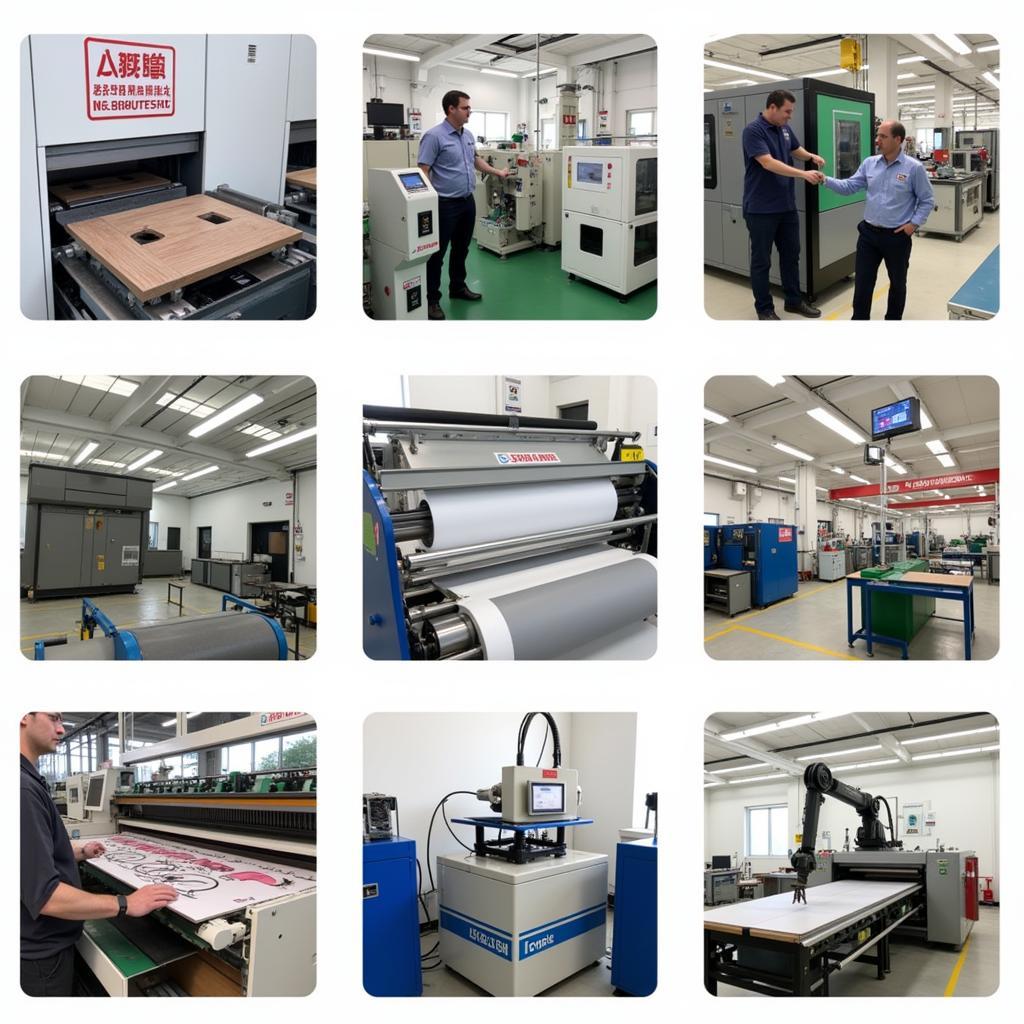Experiencing a “brake light failure” warning on your Saab 9-5’s dashboard can be unnerving. This warning typically signals a problem with your vehicle’s brake light system, which is crucial for road safety. This comprehensive guide will delve into the common causes of this warning in Saab 9-5 models, explain how to diagnose the issue, and provide possible solutions to get your brake lights functioning correctly again.
Understanding the Saab 9-5 Brake Light Failure Warning
The brake light system in your Saab 9-5 is designed to alert other drivers when you’re slowing down or stopping. When the car’s computer detects a fault within this system, it triggers the “brake light failure” warning on your dashboard. Ignoring this warning could lead to dangerous situations, as other drivers may not be aware of your intentions, increasing the risk of accidents.
Common Causes of Brake Light Failure Warning in Saab 9-5
Several factors can cause the “brake light failure” warning to illuminate in your Saab 9-5. These include:
- Blown Brake Light Bulbs: This is the most common and straightforward cause. Just like any other bulb, brake light bulbs have a limited lifespan and can burn out over time.
- Faulty Brake Light Switch: The brake light switch, located behind the brake pedal, activates the brake lights when the pedal is depressed. A malfunctioning switch can prevent the lights from engaging properly.
- Wiring Issues: Damaged, corroded, or loose wiring within the brake light circuit can disrupt the flow of electricity and cause the warning light to appear.
- Faulty Brake Light Socket: Over time, brake light sockets can become corroded or damaged, preventing a secure connection with the bulb.
- Trailer Wiring Issues (If Applicable): If you frequently tow a trailer, faulty wiring or a bad connection between your Saab 9-5 and the trailer’s lighting system can also trigger the warning.
 Saab 9-5 Brake Light Bulb
Saab 9-5 Brake Light Bulb
Diagnosing the “Brake Light Failure” Warning
To effectively address the issue, it’s crucial to identify the root cause. Here’s a step-by-step guide to help you diagnose the problem:
- Check the Brake Light Bulbs: Begin by inspecting all the brake lights. Have a friend press the brake pedal while you check if the lights illuminate. If a bulb is burnt out, it will need to be replaced.
- Inspect the Brake Light Sockets: If the bulbs appear fine, examine the brake light sockets for any signs of corrosion or damage. Clean the sockets or replace them if necessary.
- Test the Brake Light Switch: Locating the brake light switch behind the brake pedal can be tricky. If you’re comfortable with basic car repairs, you can try testing the switch for continuity using a multimeter.
- Inspect the Wiring: Carefully examine the wiring harness leading to the brake lights for any visible signs of damage, such as fraying, cuts, or burns. Repair or replace any damaged wiring sections.
- Check Trailer Wiring (If Applicable): If you frequently use a trailer, inspect the wiring connections between your Saab 9-5 and the trailer. Look for any loose connections, damaged wires, or blown fuses.
“It’s important to remember that electrical systems in vehicles can be complex. If you’re not confident in your ability to diagnose and repair the issue safely, it’s always best to consult with a qualified Saab technician or mechanic.” – John Anderson, Senior Saab Technician at Swedish Auto Specialists
Solutions for Saab 9-5 Brake Light Failure Warning
Once you’ve identified the cause of the brake light failure warning, you can proceed with the appropriate solution. Here are the most common fixes:
- Replace Blown Bulbs: If you find a blown brake light bulb, replace it with a new one of the correct type and wattage.
- Replace the Brake Light Switch: If the brake light switch is faulty, it will need to be replaced. This is a relatively simple repair that can be done at home with basic tools. However, if you’re not comfortable doing this yourself, it’s best to take your car to a mechanic.
- Repair or Replace Damaged Wiring: Any damaged or corroded wiring within the brake light circuit needs to be repaired or replaced. This task often requires a deeper understanding of automotive electrical systems.
- Address Trailer Wiring Issues: Ensure all connections between your Saab 9-5 and the trailer are secure and free of corrosion. Replace any damaged wiring or components as needed.
Preventing Future Brake Light Issues
Regular maintenance can help prevent future brake light problems in your Saab 9-5:
- Regularly Inspect Your Brake Lights: Make it a habit to visually inspect all your brake lights (including the third brake light) every few months.
- Replace Bulbs Promptly: Don’t wait for a brake light to burn out completely before replacing it.
- Keep Your Car Clean: Regularly cleaning your car, especially around the taillight areas, can prevent the buildup of dirt and grime that can lead to corrosion.
Conclusion
Addressing the “brake light failure” warning in your Saab 9-5 is crucial for your safety and the safety of other road users. By understanding the common causes, following the diagnostic steps, and implementing the appropriate solutions, you can ensure your brake lights are functioning correctly. Regular maintenance and prompt attention to any issues can help prevent future problems and keep you driving safely.
FAQs
Q: Can I drive my Saab 9-5 with the brake light failure warning on?
A: While technically possible, it’s strongly discouraged. Driving without functioning brake lights is illegal and extremely dangerous.
Q: How often should I replace my Saab 9-5’s brake light bulbs?
A: It’s generally recommended to inspect them every few months and replace them at the first sign of dimming or if you notice one has burnt out.
Q: Is replacing a brake light switch difficult?
A: It can vary depending on your car model. While it can be a DIY job for some, it’s best to consult your owner’s manual or seek professional help if unsure.
Q: Can aftermarket brake light bulbs trigger the warning light?
A: In some cases, using bulbs with different wattage or resistance than recommended by Saab can potentially trigger the warning.
Q: Do I need special tools to diagnose brake light issues?
A: Basic tools like a screwdriver and pliers are helpful for visual inspections. A multimeter can be useful for testing the brake light switch and wiring.

